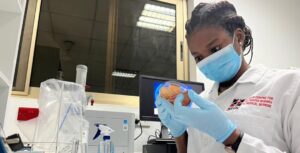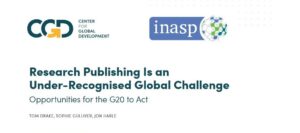Research indicates urban drinking water sources in Nepal heavily contaminated
Although access to clean drinking water is crucial to public health, it is a highly neglected issue in Nepal. 80% of all diseases in the world are related to either water or sanitation, according to the World Health Organization. WHO also reports that 30,000 adults and children die everyday due to water-borne diseases across the world. The Nepalese public health department says that 3,500 children die every year due to water-borne diseases.
A recent research article published in the journal Annals of Clinical Chemistry and Laboratory Medicine has found a frightening trend in the cleanliness of drinking water in urban centres of Nepal. The research, conducted in the Dharan municipality in eastern Nepal, indicated that urban water sources could be highly contaminated.
Out of five water supply sources investigated, three sources were found to be contaminated with faecal coliform and other bacteria and an additional source was found to be contaminated with heterotrophic bacteria.
The research titled Bacteriological Quality of Drinking Water Sources and Reservoirs Supplying Dharan Municipality of Nepal found high bacteriological contamination in water reservoirs supplying water to the town. The research was conducted by Narayan Dutt Panta with inspiration from Dr. Nimesh Poudyal and Dr. Shyamal Kumar Bhattacharya with water samples from water reservoirs in the Dharan municipality.
“When I was at the BP Koirala Institute of Health Sciences, Dharan, we used to get a lot of people who came to the hospital with some water-borne diseases,” said Narayan Dutt Panta, lead author of the journal article. “Tap water was highly contaminated. So, I thought of following the distribution line up to the source. Upon reaching the source, I found an alarming situation. There were open sources and proper disinfection techniques were not followed.”
“Children were defecating and butchers were slaughtering animals above source three, an open source without a flocculation and sedimentation plant,” he added.
Ironically, even water reservoirs with treatment plants were found to have contamination. Only one of the two reservoirs having treatment plants was found to be effective, according to the research article.
“The treatment plants lacked proper trained technicians. Even the correct doses of water disinfectants were not applied at the treatment plants,” added Pant. “If we find contamination in the source, it is easy to decontaminate it if we follow the proper process. But the process is not followed due to carelessness.”
The study results have revealed yet another threat to public health. “Rising temperature and upcoming monsoon might provoke an outbreak of cholera and diarrhoea in Nepal unless effective measures are taken on time,” said Dr Prabodh Risal, executive editor of the journal. “Public awareness about the current situation and preventive measures could decrease the incidence and prevent death related to the water born disease like cholera, hepatitis and typhoid.”
“The research has highlighted the ignorance of the local authority regarding the quality of water supplied to its public,” added Dr Risal.
The article recommends regular monitoring of the microbial quality of the water sources and planning of control measures in case of sudden outbreaks due to contaminated water. “The water sources should be protected by fencing or by any other means to control the human and animal activities,” recommends the article. “The treatment units should be constructed in [all] sources and proper disinfection of water should be carried out in sources as well as in all the reservoirs.”
The article, titled Bacteriological Quality of Drinking Water Sources and Reservoirs Supplying Dharan Municipality, appears in the latest issue (Vol. 2, No 1 2016) of the journal Annals of Clinical Chemistry and Laboratory Medicine, pages 19-23. The article is made freely available online via the Nepal Journals Online (NepJOL) platform, which is a part of the JOL Project supported by INASP.
About the Journal
Annals of Clinical Chemistry and Laboratory Medicine (ACCLM) is a biennial peer-reviewed publication published by Nepalese Association for Clinical Chemistry (NACC). The Association is an international, non-political, non-profit organization formed in 2013 with and objective to advance the study and practice of clinical biochemistry, disseminate knowledge of the principles and practice of clinical biochemistry, and protect and promote the interests of clinical biochemists.
About NepJOL
NepJOL hosts over 110 journals published from Nepal, covering the full range of academic disciplines. The objective of NepJOL is to give greater visibility to participating journals and to the research they convey. NepJOL was initiated in June 2006 and officially launched in September 2007. It is a project supported by the International Network for the Availability of Scientific Publication (INASP) and locally managed by Tribhuvan University Central Library. It aims to promote the awareness and use of Nepal-published journals in all disciplines by providing access to tables of contents (TOCs), abstracts and full text on the Internet.
About INASP
INASP is an international development charity working with a global network of partners to improve production, sharing and use of research information and knowledge, so that countries are equipped to solve their development challenges. In particular, INASP works to strengthen the availability, access and use of international research information by researchers in developing countries and the production, quality, dissemination and access of research outputs from researchers in those same countries.
Disclaimer: Research published in journals hosted on the NepJOL platform is selected by the journals in accordance with their own editorial processes and criteria. INASP and Tribhuvan University Central Library provide hosting and guidance on good practices but are not involved in selection of research.
For Further Information
Thakur Amgain, Communications Consultant, INASP
email tamgai@inasp.info
Dr Sangita Shrestha, Communications Officer, INASP
email sshrestha@inasp.info

 Previous Post
Previous Post


